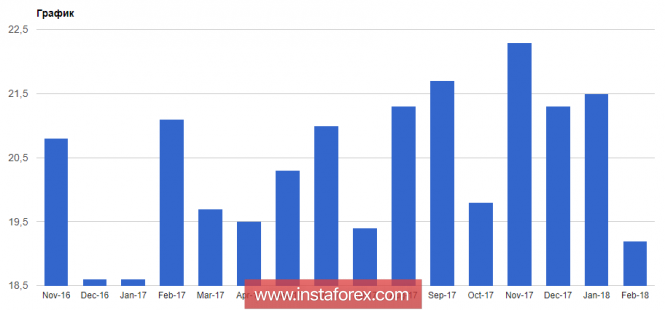
The euro came under pressure against the US dollar in the morning on Monday, April 9, after data was released, which indicated a decline in exports from Germany in February of this year. The current indicator, together with other data that came out last week on the German economy, clearly show that Europe's largest economy is starting to lose momentum. The slowdown in the growth of the German economy will directly affect the overall growth of the eurozone economy in the first quarter of this year.
According to the Federal Bureau of Statistics of Germany, exports in February decreased by 3.2% compared to the previous month. Imports decreased by 1.3% compared to the previous month. Germany's foreign trade surplus in February fell to 19.2 billion euros, compared to 21.5 billion euros in January. Economists expected that the surplus would be reduced only to 21.0 billion euros.

Despite the weak data at the beginning of the week, investors were pleased with the fact that the US is not inclined to unleash an instant trade war with China, which may have led to a slight demand for risky assets after the US Treasury Department reduced the tension on this issue.
Let me remind you that the administration of US President Donald Trump continues to threaten China with new and larger duties on imports. However, before the specific introduction of terms and duties, the matter has not yet been reached. Many investors hope that both parties will have enough time to come to an agreement and prevent the commencement of the trade war.
Approximately the same appeal was made by US Treasury Secretary Steven Mnuchin. He said he does not expect the beginning of a trade war, since the US intends to conduct a dialogue with the Chinese authorities and continue to discuss this issue. However, Mnuchin noted that if China is not ready to create conditions for fair and mutual trade, the US will resort to more aggressive measures to protect its trade interests.
As for the technical picture of the EURUSD pair, buyers are trying to break above the upper boundary of the descending channel, formed on April 2 of this year. If this happens, you can count on new highs around 1.2310 and 1.2350 by the middle of the week.
The Japanese yen ignored the words of the Bank of Japan Governor. Kuroda said that the Central Bank will patiently continue the current policy of powerful mitigation, since the target inflation rate of 2% is still far off. He also noted that he will discuss the necessary policy at each meeting until there comes a point when it is necessary to think about an exit from the current policy.